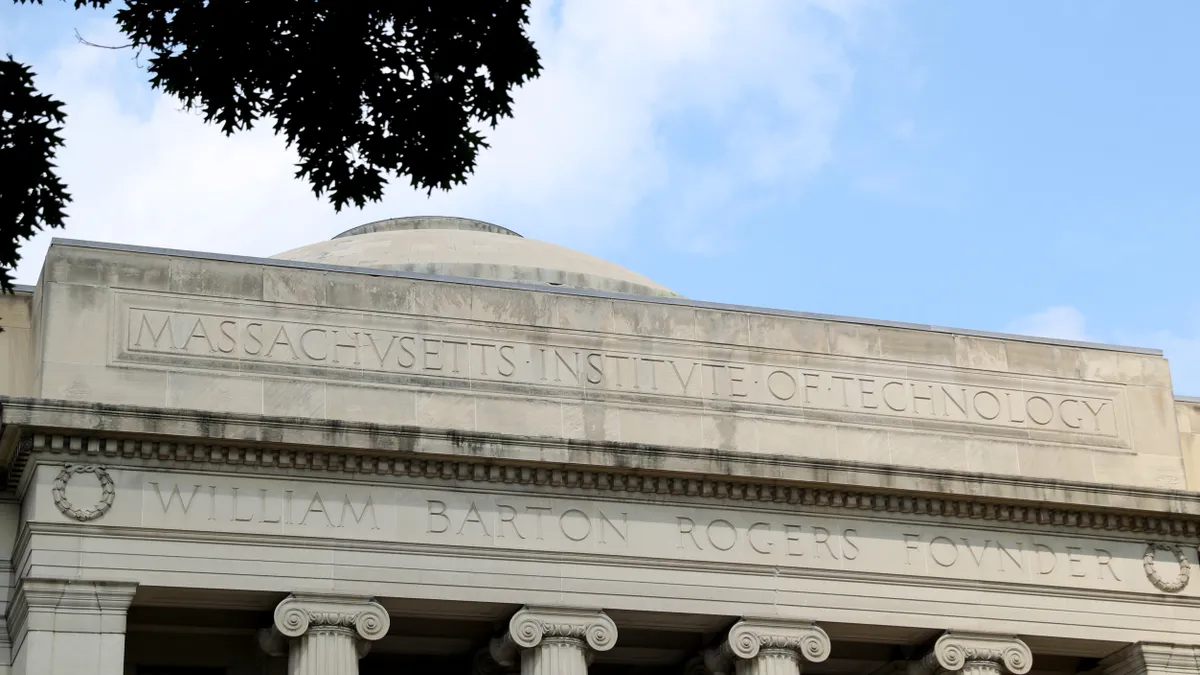Out of some 1.5 million incarcerated people in U.S. prisons, more than half (64%) are eligible for a postsecondary program, according to research from the Vera Institute and the Georgetown University Center on Poverty and Inequality. Yet few complete an associate degree or other credential while locked up.
That's largely because incarcerated individuals lost their access to Pell Grants nearly 25 years ago, when then-President Bill Clinton ushered a wave of tough-on-crime policies through Congress. Although that ban still stands, up to 12,000 people in prisons have had access to Pell Grants since the U.S. Department of Education approved a pilot program in 2015 to test whether it should be lifted.
In all, 65 colleges are involved in the Second Chance Pell experiment, offering a total of 24 bachelor's degrees, 69 associate degrees and 82 certificates. Since the program's rollout, more than 600 incarcerated adults have earned a credential.
The University of Baltimore, a four-year public college in Maryland, is among the participating institutions, offering a bachelor of arts in human services administration to students at a maximum-security prison in the state.
To understand how the programs are structured and what the students in the program gain from the experience, we spoke with Andrea Cantora, director of U of Baltimore’s Second Chance College Program. Now in its third year, the program has about 43 students who are about halfway through their bachelor's degree.
Editor's note: This interview has been edited and condensed.
EDUCATION DIVE: How did U of Baltimore get involved with the Second Chance Pell pilot?
CANTORA: Before the experimental sites, I was teaching at a Maryland prison for no credit. I would teach criminal justice courses to incarcerated students through Temple University's Inside-Out Prison Exchange Program, in which university students sit in a classroom with incarcerated students and learn with them side-by-side.
When the Ed Department announced the Pell Grant experiment, in 2015, I met with people on campus and said, "I've been doing this work for a little while now. I think this would be a great opportunity for the university." We already had a partnership with the prison, which was a big part of what the Ed Department was looking for.
Why did you select the bachelor of arts in human services administration to teach incarcerated students?
CANTORA: We did a survey of incarcerated people who were taking noncredit courses that asked them, "What do you want to do when you get out? What's the career path you want to take?" The majority indicated they wanted to work in the community, work with at-risk youth, or work with violence prevention programs and nonprofits. We felt like human services was a good fit because it teaches students to work in the service area with those different populations.
In the past few years, we've been focusing on general education courses, which is what most freshmen do. We're hoping a lot of our students will leave the prison within two, three, four years of being in our program, come to campus, and either go into the human services administration major or switch majors if that isn't their first pick.
There's some debate over what kind of programs the experimental sites should be offering incarcerated students. How do you strike a balance between programming that's useful but also not limiting?
CANTORA: It depends on the college. We're a four-year university, so we don't offer any vocational training. A lot of the programs throughout the country are run by community colleges, which have the ability to offer certificate programs or associate degrees. Anne Arundel Community College is also offering postsecondary education at the prison I’m working in.
Coming from a four-year institution, I strongly believe in getting a bachelor's degree. I think that's incredibly valuable and useful, but it might not be for everybody.
How are the classes are structured?
CANTORA: We bring in the same exact courses that are offered on campus. The same exact instructors, adjuncts and full-time faculty come into the prison to teach.
The one way we're limited is technology. Our students don't have access to the Internet. We have to be a bit more creative with certain projects that may have required a student on-campus to do online research. If there is a course that requires students to do research, they fill out a research request form and we have graduate students take that back to the university and bring materials into the prison.
What are some other challenges with prison education?
CANTORA: We can't communicate with our students unless we're there. If one of our instructors gets sick and we have to cancel class, we can't always inform our students immediately. Our students might want to meet with the instructor, but they only get a chance to see them once a week.
What has been the effect on the people who are taking the courses?
CANTORA: We're seeing changes in our students' self perception, their confidence, their communication skills and their motivation. Their relationship with their family is also something that we're seeing change for them because they're a college student. They're incredibly motivated, and they're doing something really positive. They come back into our classrooms and talk about a great visit they had with their kids and how their kids are interested in going to college because they are.
Of the students who have been released from prison, how many are continuing classes at the U of Baltimore?
CANTORA: We've only had about six or seven released so far, but we are in communication with them. We have one student who was released but is going through a drug treatment program, so I wouldn't classify that person as completely released.
Our first student who was released, in December 2017, has been continuing every single semester with us. Two of our other released students live hours from the university. Those students are working. Other students that live closer have decided to work for a little while before returning.
To me, I see that as a success. They're working and doing well. They reach out often and we still see them, but they're not ready to continue their education because they have been incarcerated for many years and they have to support their families. It's been a little bit of a challenge for us because we want everyone to continue.
What kind of support does U of Baltimore offer for these students?
CANTORA: We've developed some scholarships for our students. When they return home, we can help cover their tuition and books and supplies so they don't have to think about the financial aspect of school.
We have a reentry coordinator. She goes into the prison twice a week to meet with students who are getting ready for release. She works with them on what their release is going to look like, talking to them about housing, employment and any kind of treatment programs they need to do. When they're on campus, she tries to direct them to services.
We also have a career center on campus that we direct students to. We were able to help our first student with employment, first through Federal Work-Study, which is part-time employment. We've been trying to do that with all our students who are coming up to be released
How do you ensure continuity in programming for those who may transfer from one prison to another?
CANTORA: That is challenging. We have educational holds set up at our prison, meaning students are on a list that states they're in a college program and they won't be transferred unless they want to or there's a security risk.
What kind of reforms do you think are needed most in prison education?
CANTORA: We're going into our fourth year. This initiative was originally intended to be a three- to five-year experiment.
Some experimental site initiatives in other areas, not prison education, have gone on beyond that timeframe. There's some that were planned to last three to five years and now they're in year eight. The Ed Department sometimes says it can't give us an end date, so nobody knows when this experiment is going to end.
Lifting the Pell Grant ban for incarcerated students nationwide is what's needed to keep it going. I'm hoping we get there through the Higher Education Act.























